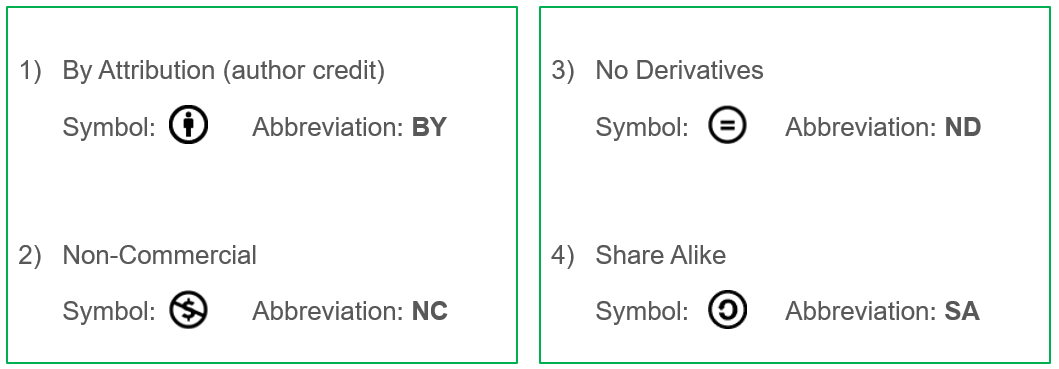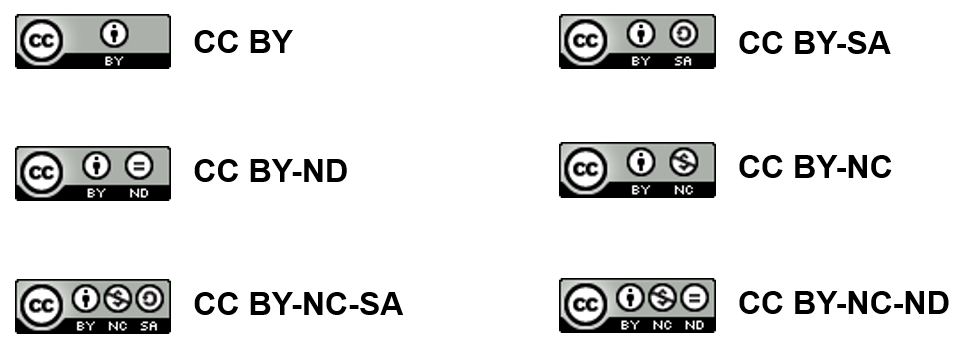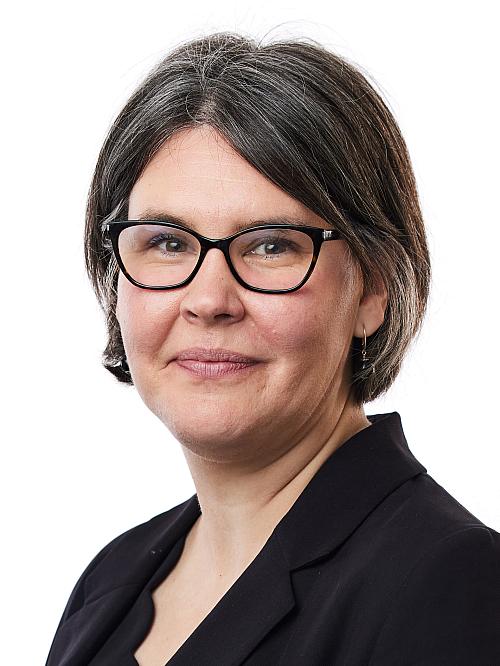Frequently asked questions about copyright for students
All literary and artistic works are protected by copyright law. As a student, you need to be aware of how you may use material from books and articles, such as images, tables and figures. You often need to ask for permission from the copyright holder to use an image in your work.
Here you will find answers to the most common questions regarding the use of copyright-protected material in Sweden.
What is copyright?
Copyright gives the creator of a work (the copyright holder) the right to decide how the work may be used. The Swedish Copyright Act governs how you may use someone else's material.
If you want to use someone else's material, you first need to find out if and, if so, how you may use and publish the material. There are often licenses and agreements that allow you to use the material. Sometimes, however, you need to contact the author or the publisher and ask permission to use their material.
Can I share material from Canvas?
It is not allowed to share any material from Canvas outside the platform. This applies to all types of material, for example presentations, articles, practice exams and compendiums.
You can make a copy of the material for your own personal use, but you cannot distribute it to others or share it on the internet or social media platforms.
The agreement with Bonus Copyright Access states that you may only share copyrighted material in the network and in the digital platform (Canvas) that both students and teachers use. No other distribution is permitted
Can I use an image from a book or an article in my assignment?
JU has an agreement with Bonus Copyright Access that allows students to use copyrighted material, such as images, tables and figures from books and articles, within JU without asking for permission. References must always be stated.
This means that you are allowed to use, for example, a figure from a book or an article a PowerPoint presentation or a text that will be uploaded in Canvas and only read by your teacher, examiner and students in your course.
If the work is to be published and made available outside JU, this exception does not apply.
Can I use an image from a book or an article in my thesis?
If you want to use, for example, a figure from a book or article in a thesis that will be published in DiVA and become available to people outside JU, you always need to ask the responsible publisher or copyright holder for permission first. You can read more about how to do it further down the page, under How do I ask for permission to use an image?
State in your reference that you have been given permission to use the material, for example by writing "Used with permission". You can see examples of what such a reference might look like in the library's APA guide: Tables and figures
Exclude images
If you have not been able to obtain permission to use copyrighted images or do not wish to seek permission, you have the option to remove them from your thesis before uploading it to DiVA. In that case, you can mention in your thesis, for instance, "The electronic version of this thesis does not include images due to copyright reasons" or something similar.
How do I ask for permission to use an image?
Images from books
If you want to use, for example, a figure from a book, send an email the publisher. They can help you further. Keep in mind that you need to get a written permission and that you should save it, as a kind of receipt.
Images from articles
If you want to use a figure or image from a journal article, you can often apply for permission via the RightsLink (CCC) service. Many journals are connected to this service and most of the time you get an answer right on the screen that you can use the image in your thesis free of charge.
This is how it works:
- Search for the article on the journal's website.
- You will usually find the link somewhere around the title of the article and it may say, for example, "Permissions", "Reprints & Permissions", "Request permission", "Get rights and content" etc.
- In the RightsLink form, you then choose what to use and for what, for example an image for a thesis, and click further in the form until you see whether you can use the image or not.
%20RightsLink-permissions-small.png)
Sometimes you need to create an account in RightsLink to proceed. Even if it feels a bit complicated, it will be faster than contacting the publisher in another way.
Watch the video How to Obtain Permission To Reuse Figures and Tables -Figure Permission from Published Papers [05:32] to learn more.
Can I use screenshots in my thesis?
It is possible to use screenshots from a movie, TV series, or a web page in a thesis that you plan to upload in DiVA. However, it is important to first seek permission from the copyright holder. This is because films, television programs, and web pages with images are protected by copyright laws. In essence, a screenshot is like a photograph of copyrighted material.
When sending an email to the copyright holder, it's essential to explain that the screenshots will be used for a non-commercial thesis.
How much text can I quote?
It is acceptable to quote parts of a work as long as it is done in good practice and justified by the purpose. The need to include parts of someone else's text in your own text should be apparent. If you intend to review a text critically or want to emphasize your reasoning or interpretations of a text, it may be appropriate to quote parts of the text in your thesis. Although the amount you can cite may vary from case to case, in scientific contexts, it can be quite extensive. It is not acceptable to quote an entire work. It is considered good practice to cite your source and not quote unnecessarily.
Can I use images found on the internet?
If the image has a license, such as Creative Commons, you do not need to seek permission from the copyright holder.
If you can't find a license, contact the person or organisation behind the website to seek permission to use the image. If a photographer or artist is listed, you should see if you can get hold of that person directly. You can also search for the name of the image creator on the website of the Swedish copyright organisation Bildupphovsrätt and apply for permission through them. Costs may apply.
Are there images that can be used without asking for permission?
Yes, you can use some images without asking for permission.
Creative Commons
If an image (or text, film, etc.) is marked with a Creative Commons license, the creator has already marked in advance how you may use the image. You don't need to ask for permission, but always state the author.
CC licenses are based on four terms and these can be expressed either graphically with symbols or written with abbreviations:

These can be combined in six different ways:

In addition, there are also two different symbols that indicate that a work is completely free:
- CC0 (CC zero) means that the author has waived all rights and you can use the work or image as you wish. The work has therefore become part of the public domain.
- The second symbol, the Public Domain Mark (PDM), is not really a license but a marking of material that has been identified as completely free and that is already in the public domain.

Where can I find free images without copyright?
Here are some tips of websites containing free images:
Keep in mind that many of the pages have advertisements for photos that can be bought! Check carefully that you have selected a free image.


